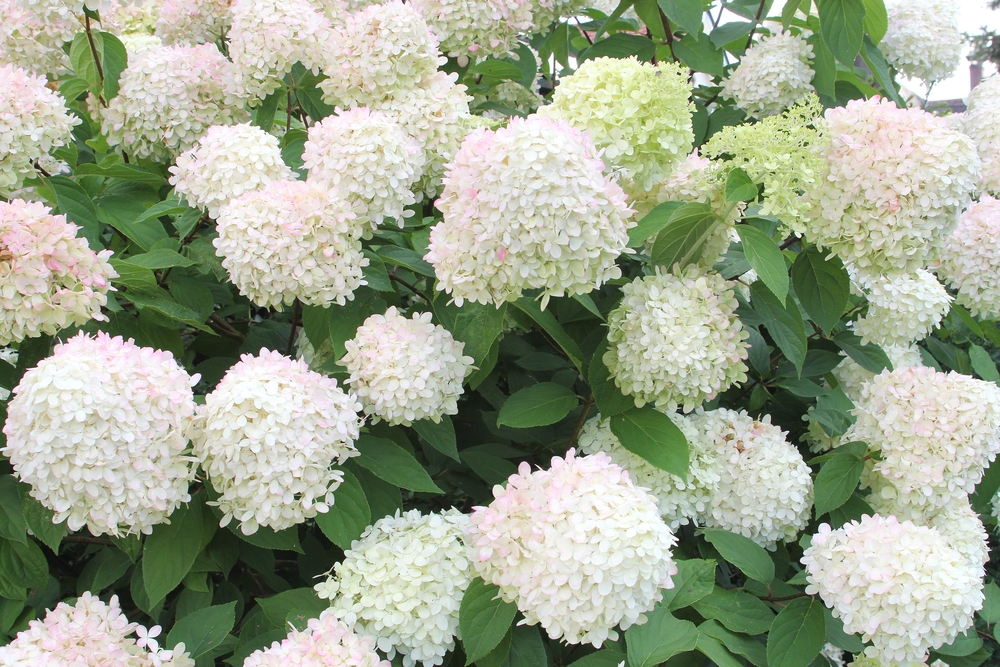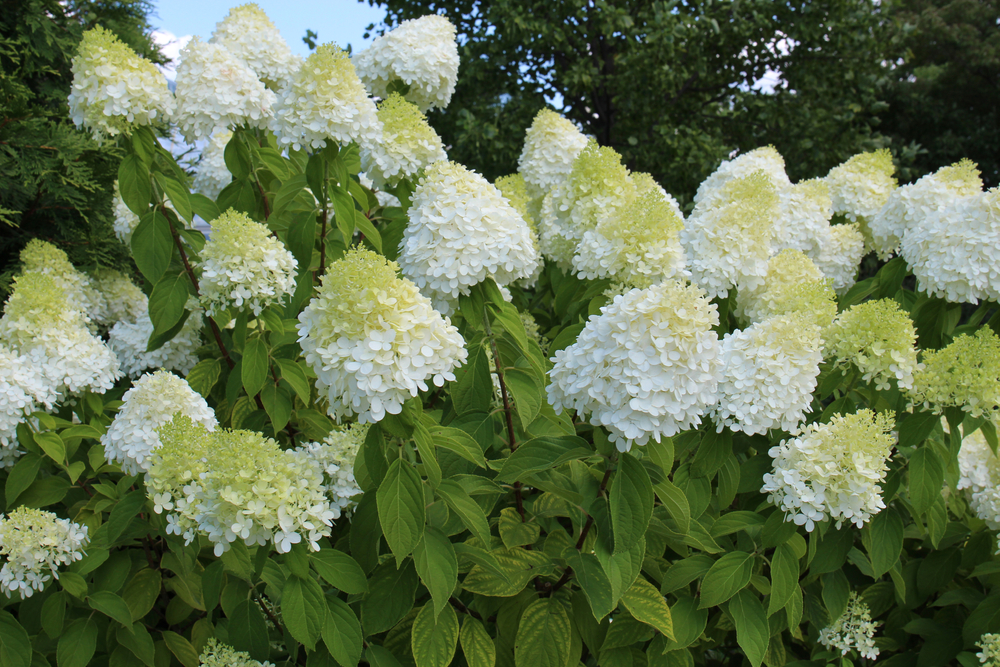The Moonrock Hydrangea (H. paniculata ‘Moonrock’) is a beautiful, unique hydrangea that is perfect for any garden! Also known as the smooth hydrangea, this plant is native to China and Japan and is prized for its large, round flower heads. These are relatively easy to care for and can thrive in a variety of conditions.
It gets its name from the fact that its flower heads resemble rocks or stones. The flowers themselves are white, but each petal is edged with a thin line of pink. These blooms appear in late summer and continue into fall.

| Botanical Name | Hydrangea Paniculata |
| Common Name |
Moonrock Hydrangea |
| Plant Type | Perennial |
| Flower Color | White, large, round flower heads |
| Size When Mature | 48 to 72 Inches |
| Bloom Time | Midsummer to Fall |
| Sun Requirements | Partial to Full Sun |
| USDA Hardiness Zones | 3 – 8 |
| Soil PH Range | 6.0 – 6.2 |
| Soil Type | Slightly acidic, moist, well-drained soil |
| Water Needs | Medium |
| Native Area | China and Japan |
What You Need to Know About Moonrock Hydrangea
This is a beautiful, showy shrub that adds drama and color to any garden. However, it is poisonous if ingested. So if you have small children or pets, you may want to choose another plant.
It smells sweet like jasmine and has large, white blooms and thick, green foliage that will surely bring butterflies to your garden. This beautiful plant shows off its blooms from July to August usually Midsummer into fall. Prized for its low maintenance and ability to thrive in various conditions, this shrub is perfect for anyone who wants to add a little bit of beauty to their yard without all the fuss.
How to Care for Moonrock Hydrangea
Here’s everything you need to know about growing and caring for a thriving Moonrock Hydrangea:
Light
It does best in full sun but can tolerate some shade. If you are growing it as a houseplant, be sure to rotate it every few weeks so that all sides of the plant get an equal amount of light. However, brown spots on the leaves can be a sign of too much direct sunlight.
Water and Soil Needs
Moonrock Hydrangea prefers moist, well-drained soil that is slightly acidic with a PH of 6.0 to 6.2.
When it comes to watering, it prefers to be on the dry side. Many people make the mistake of overwatering their plants, which can lead to root rot. Allow the soil to dry out completely between watering. You’ll notice that the leaves will droop (and it’s fine) – it just means you have to water your plant. It can be quite forgiving in terms of watering, but make sure you don’t let it happen often.
Temperature Requirements
It can actually survive in a wide range of climate zones, from USDA Zones 3 to 8. That means it can withstand temperatures as low as -30 degrees Fahrenheit. They prefer cooler climates, as these plants won’t bloom as profusely if the temperature gets too high.
Moreover, Moonrock Hydrangeas are generally quite adaptable when it comes to temperature. They can tolerate both hot and cold weather, as long as they’re not exposed to extreme conditions for extended periods of time.
Fertilizer
The best fertilizer to use on a Moonrock Hydrangea is a balanced fertilizer that can be used once a month during the growing season. A 0-20-20 fertilizer is ideal, with a slow-release formula being the best option.
More or less, your plant will only need to be fertilized if it’s not getting enough nutrients from the soil. If you notice the leaves start to yellow or the plant isn’t blooming as much as usual, then it’s time to fertilize.
Common Diseases
Like all plants, it is susceptible to certain diseases. Powdery mildew, rust, and leaf spot are the most common. This doesn’t always mean that your plant is sick, but it can be an indication that something is wrong.
Fortunately, these diseases can be treated with a fungicide. If you notice any of these issues, be sure to treat them as soon as possible so they don’t spread to other plants in your garden.
As for pets, Moonrock Hydrangea is relatively unattractive to pests. However, they can be troubled by aphids, scale insects, whiteflies, and mealybugs. These pests are attracted to the sap of the plant and can cause stunted growth, yellowing leaves, and distorted flower buds.
Moonrock Hydrangea Propagation
Propagation of this plant can be achieved in a few different ways. One is by taking softwood cuttings in the late spring or early summer when the new growth is just starting to harden off. These softwood cuttings should be taken from the tips of the stems and should be about 4-6 inches long. Dip the cuttings in water and then plant them in a potting mix. Keep the soil moist and warm until they have roots, which can take several weeks.
An easier way is by division. This is best done during the spring. Simply dig up the entire plant and then divide it into several sections, making sure each section has a good root system. If the roots are tangled up, you can gently untangle them with your hands, or a sharp knife if needed. Plant the divisions in their new location and water them well.
Moonrock Hydrangeas are also sometimes propagated by seed, but this is a more difficult method and can take several years for the plant to mature. The seeds should be collected in the fall and then planted in a pot filled with moistened potting mix.

